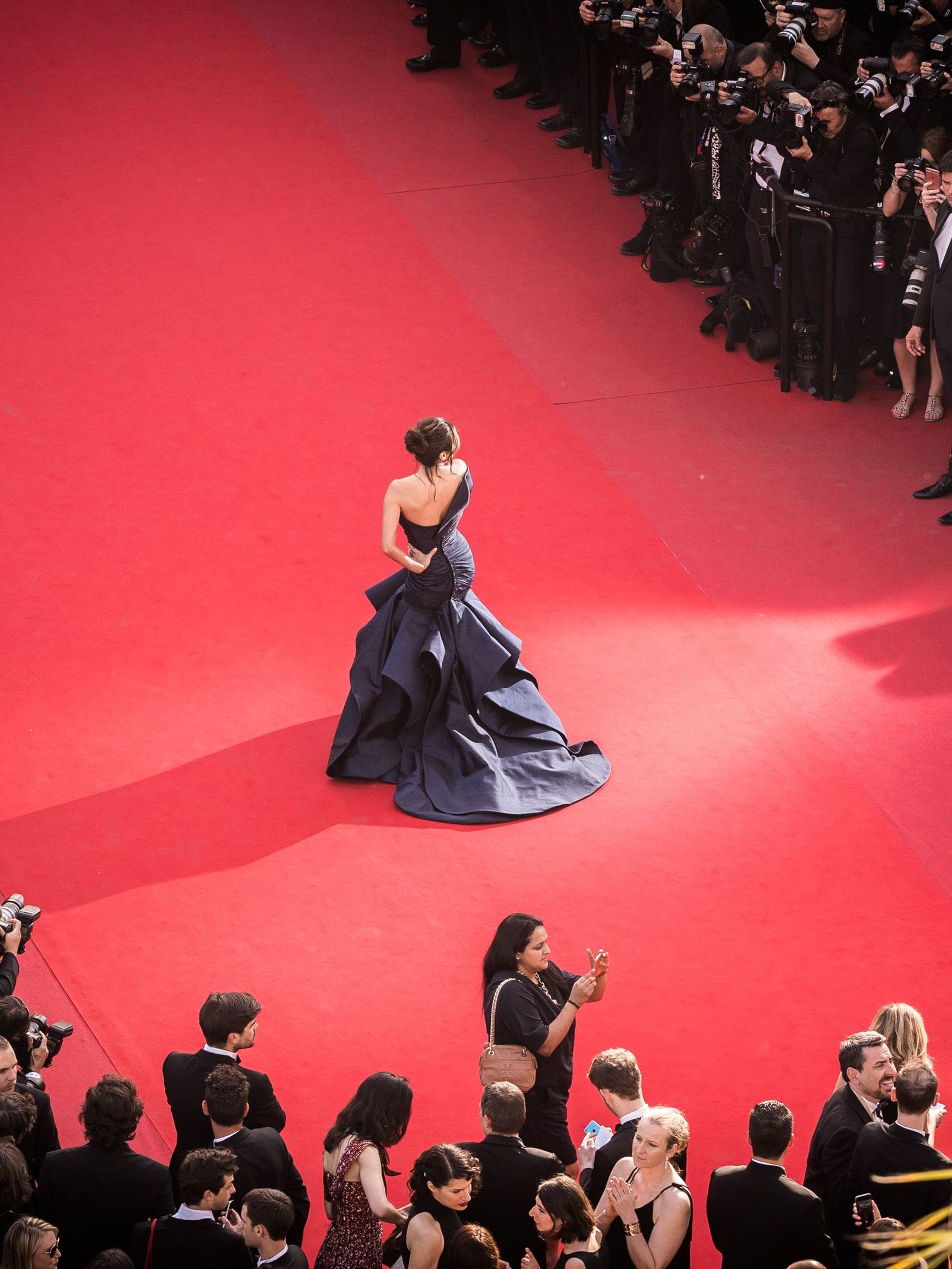This is the incredible story behind Tati Gabrielle and Paloma Garcia Lee's 2022 Oscars looks
This year's return to the 'in-real-life' Oscars ceremony reminded us why the pinnacle night of red carpet dressing still has the power to create looks that define a decade (Icelandic singer Bjork as a swan, anyone?). Yet, the fact that the Oscars red carpet now includes a conversation on sustainable fashion is, arguably, down to one woman's vision: Suzy Amis Cameron – the environmentalist wife of Academy Award-winning director James Cameron.
In 2009, Cameron found herself bewildered at the lack of responsible fashion options to wear for an awards evening that saw Avatar nominated nine times. The result? A competition for any designer worldwide over 21 to sketch a 'sustainable' design with the winner worn by a talent to the Oscars.
"I really only ever envisioned the idea being for that one year, but after the winner Jillian Granz created this beautiful design and (Titanic costume designer) Deb Scott – who was helping build the dress – found that children were, in fact, harvesting the piece of silk we wanted to use, I realised that it was not only an environmental issue but a social one too. I couldn't just leave it there," reflects Amis Cameron. And so Red Carpet Green Dress (RCGD) was born, a female-led organisation and platform that aims to "bring sustainability to the forefront of the conversation" through a multicultural lens - currently, they incorporate 21 countries across the globe.

Suzy Amis Cameron and James Cameron at the 82nd Academy Awards in 2010. Amis Cameron wears the first ever RCGD dress. .
After more than 10 years of "keeping at it," the growth of RCGD and the evolvement in mindset towards sustainable fashion design is phenomenal. I am speaking to Amis Cameron before she leaves for Los Angeles. Not only an official partner of the Academy Awards, RGCD also hold a pre-Oscars gala to spotlight the competition runners up (menswear and womenswear) and sustainable innovation. "All corners of the industry from actors, directors and luxury brands are now approaching us," Amis Cameron says.
Since 2020, RCGD has worked with cellulose fibre specialists Tencel Luxe to create dress fabric, as well as Louis Vuitton and Armani on design collaboration. "Sometimes we are teaching them, sometimes they are teaching us and sometimes we are all learning together," says Amis Cameron.
Over the past decade, some stand-out moments have come to include the 2013 dress worn by Naomie Harris designed by RCGD contest winner Michael Badger. "We paired him with Vivienne Westwood as a mentor," Amis Cameron says. "She offered her expertise to us, and it was the first time she had done a mentorship in this way. Badger used candy wrappers stitched into a dress to look like gold leaf. He also focused on the process of natural dyes in Africa, using tree bark to dye ink for traditional symbols."

Lea Seydoux at the 93rd Academy Awards wearing an RCGD dress. Photo: Getty

Tati Gabrielle at the 94th Academy Awards wearing an RCGD dress. Photo: Getty
An exciting talent collaborating with RCGD at this year's ceremony is young actress Tati Gabrielle (at the time of writing in her final fitting of a custom made Hellesy), a sustainability advocate of African-American and Korean descent, as well as West Side Story star Paloma Garcia Lee. "We are passionate about how we don't just keep hearing from the same voices and demographics; I think it's the way to drive forward change."
While no Scandinavian designers have yet to actually win the contest, Amis Cameron explains she admires the whole of Scandinavia and "how they have led the charge of so many important conversations."

Paloma Garcia Lee at the 94th Academy Awards wearing an RCGD gown . Photo: Getty

Sustainable activist Maggie Baird at the 94th Academy Awards wearing an RCGD gown . Photo: Getty
As each year's Oscars red carpet arguably becomes more politicised, I question how they maintain a sense of storytelling and creativity with the design collaboration process. "Well, storytelling has been around since campfires, if you really think about it," she muses, "but being able to infiltrate something as quintessential as the Oscars red carpet and bring in this conversation around taking care of the planet and even your own body (through natural dyes, for example), is incredible. We always wanted to create a story where it wasn't just about an object or a design for one night but had meaning and intelligence to it," she says. "It's about taking a dress or tux for that big night but distil that conscious conversation into clothes we wear every day."
